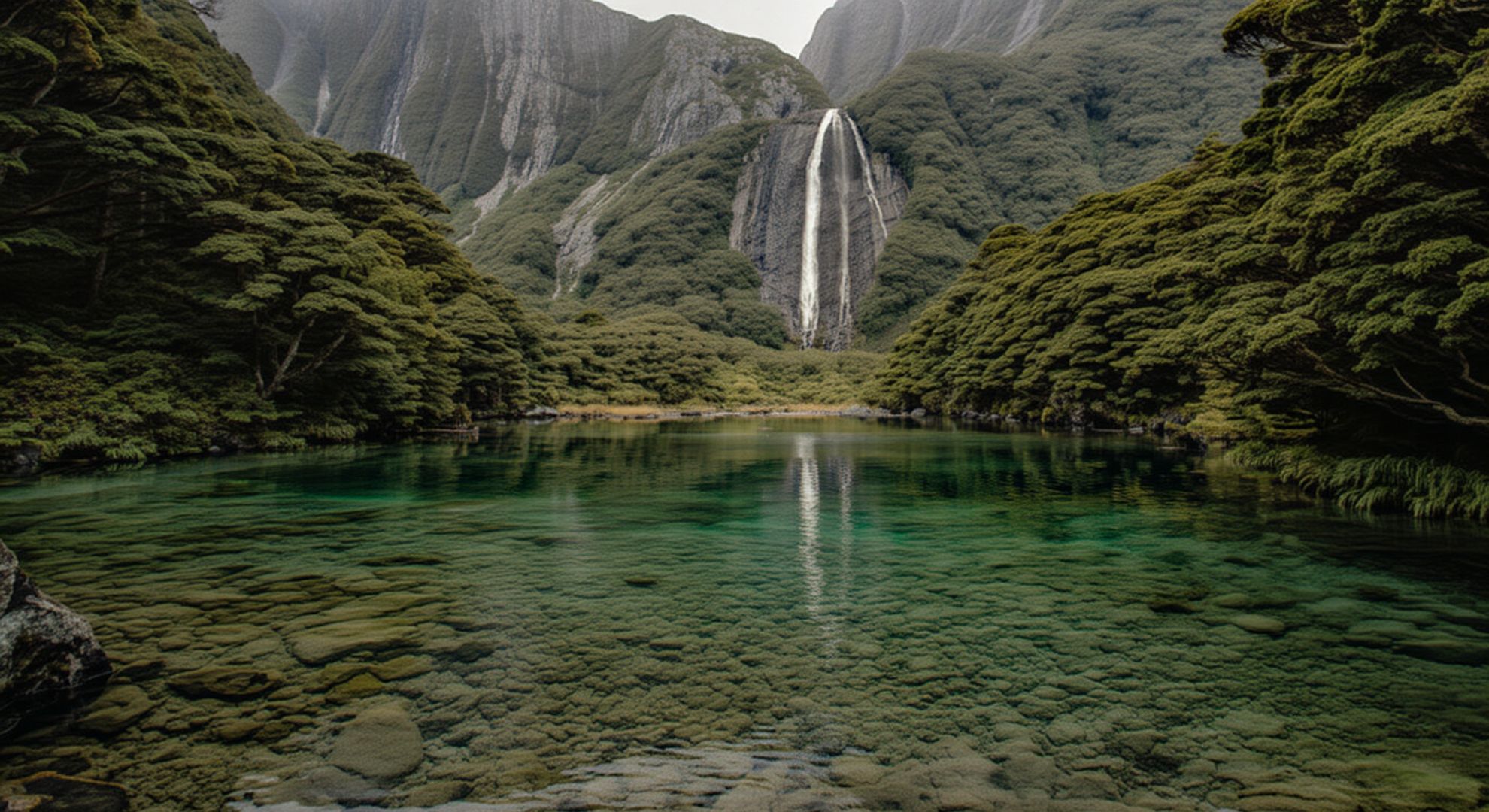Mist hangs low over a stone-cold valley, and the water below looks like air made liquid. Step closer and the surface becomes a lens, revealing pebbles, leaf veins, even the fine threads of algae with an almost unsettling clarity. You wait for distortion, for ripple or tint, but the lake keeps refusing to blur.
In a region defined by granite walls and ceaseless rain, such transparency feels improbable. The basin is tucked into Fiordland’s sprawling wilderness, where glacial scars and beech forest still dictate the travel day.
Locals whisper about its purity. Scientists murmur about data. And policymakers are beginning to circle the phrase that changes everything: special protection.
The science of clarity
Water this clear usually means filtration on overdrive. Precipitation seeps through older bedrock and deep moss beds that act like layered filters, stripping away color and particulates.
Minimal inflow disturbance keeps the water column calm, while a shaded catchment reduces algal blooms. The fewer suspended solids, the longer light can travel, which is why the lake appears almost bottomless even when it’s not especially deep.
“Think of it as a natural laboratory,” says a veteran backcountry guide. “You’re looking at what water wants to be when it has nothing in its way.”
Why protection is on the table
Fiordland sits within Te Wāhipounamu, a UNESCO World Heritage jewel managed under layers of stewardship. Yet even here, fragile sites can be overloved. Viral posts bring sudden crowds, and with them sunscreen films, stray trash, and the quiet creep of invasive spores.
Officials are considering tools that range from seasonal access controls to permanent sanctuary status. Under New Zealand’s Department of Conservation, that could mean stricter track management, water-contact restrictions, or a formal no-swim, no-boat designation.
For mana whenua, kaitiakitanga—guardianship—guides any decision. A culturally grounded approach might include rāhui, temporary closures that let the place breathe and recover.
Voices from the valley
“It’s like staring into air, only colder,” a tramper told me, rubbing wet hands on a pack strap. “You feel a responsibility you didn’t know you had.”
A freshwater ecologist was more measured: “Clarity is a fragile equilibrium. One muddy boot in the wrong drainage, one burst of nutrients, and you’ve tipped the balance.”
And a kaumātua’s words stayed with me: “If the water is clear, the thinking should be clear too—care first, curiosity second.”
How it compares
Not all clear waters are equal, and not all should be treated the same. Here’s how this lake sits in a broader context.
| Feature | Hidden Fiordland Lake (proposed) | Blue Lake (Rotomairewhenua) | Lake Marian |
|---|---|---|---|
| Location | Remote Fiordland valley | Nelson Lakes National Park | Fiordland alpine cirque |
| Access | Unmarked or lightly formed route | Marked track; limited camping nearby | Popular day hike |
| Protection status | Under review for tighter protections | Strong protections; culturally significant; no swimming | Within a national park, general protections |
| Water-contact policy | Potential no-swim, low-impact visit rules | No swimming or water contact | Swimming occurs; cold, variable clarity |
| Typical clarity | Exceptionally high, highly sensitive | Among the world’s clearest naturally | Turquoise glacial; clarity can vary with silt |
| Cultural dimension | Within Ngāi Tahu rohe; kaitiakitanga emphasized | Deep cultural significance and stewardship | Recreation-led with growing awareness |
What protection could include
To keep a delicate system intact, managers often blend science with culture, and access with care. Potential measures under discussion include:
- Limited daily visitation, defined viewing zones, and no in-water contact; boot-brush stations to block invasive spores; “drain, clean, dry” rules for all gear; co-governance with mana whenua; and ongoing clarity and biodiversity monitoring to track change.
Visiting responsibly
Even before policy catches up, small choices make a difference. Stay on durable surfaces. Pack out everything, including “micro” trash like tea tags and trimmed cords. Treat the shoreline as a tapu edge—look, learn, leave it as found.
If you carry a camera, keep your distance. Telephotos and restraint are quieter than drones and shouts. If you carry a cup, don’t dip it in the water—treat the lake as you would a sanctuary.
What happens next
Field teams will keep sampling streams, measuring dissolved organics, and logging how light behaves through the column. Community hui will test what “access” should mean, and whether awe can coexist with limits.
Perhaps a sign will appear one day at the edge of the track, not triumphant but gentle: Protected waters ahead. Look with your eyes, not your feet. And listen—the clearest thing here is the silence.
